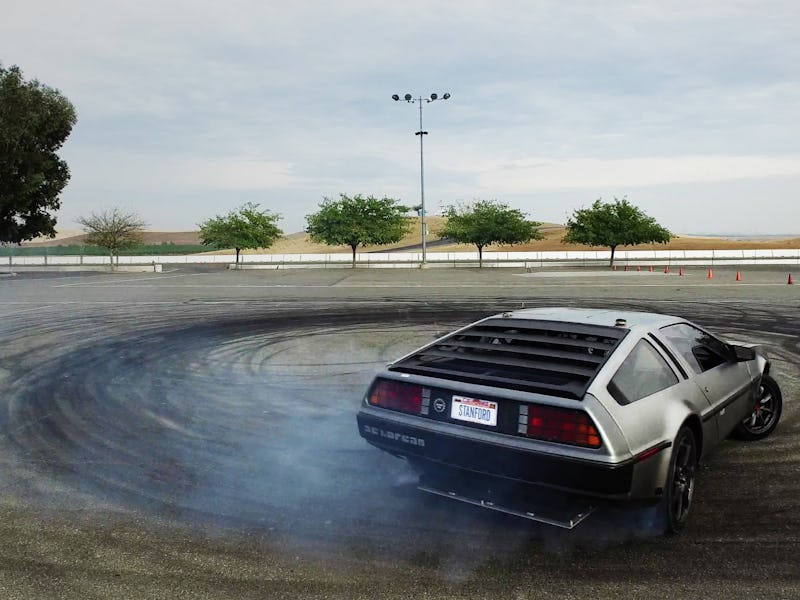Stanford's MARTY Is a Self-Driving DeLorean That Can Do Donuts
"Drifting is a way to study these larger questions, with style."

Just in time for Back to the Future Day, the Revs Program at Stanford University has introduced a self-driving DeLorean, appropriately called MARTY (Multiple Actuator Research Test bed for Yaw control).
The project, led by Stanford professor Chris Gerdes, features the 1981 DeLorean undergoing high-performance testing… by doing some awesome donuts.
On the surface, the self-driving DeLorean looks awesome in all of its retro-futuristic greatness, but Gerdes says the stress testing could help improve practical automated driving, too:
“We want to design automated vehicles that can take any action necessary to avoid an accident.”
The project began in May 2013 with a conventionally-purchased DeLorean, according to Wired.
MARTY was built in collaboration with Renovo Motors and includes a revamped “steering motor, steering rack, and custom steer-by-wire system.” It’s also got individual left and right motors, which provide a total of “4,000 pound-feet” of electric power. The extreme power enables precise handling for MARTY’s donuts and drifting.
Unlike commercial automated cars, MARTY doesn’t use radar or sensors to detect its environment. It’s all about pushing the physical limits of what an automated car can do, not what it necessarily will do. As Gerdes says, “The very best rally car drivers…sacrifice stability so they can use all of the car’s capabilities to avoid obstacles and negotiate tight turns at speed. Their confidence in their ability to control the car opens up new possibilities for the car’s motion.”
Trading off stability could help improve automated driving technology for situations when the car must drive more like a human. If there were an emergency on the road, a more “reckless” automated vehicle could theoretically react and escape safely.
The Revs Program at Stanford team plans to get MARTY on a real race track to react to realtime situations. It would have to react not only to sharp turns, but also other aggressive drivers. Currently, MARTY can just lock itself into an automated mode that spins it around and around in donuts.
“We do want automated vehicles that can decipher the subtle cues drivers give when driving and incorporate this feedback when planning motion.”
It doesn’t hurt that this is possibly the coolest imaginable way to test drive the future: “Drifting is a way to study these larger questions, with style.”